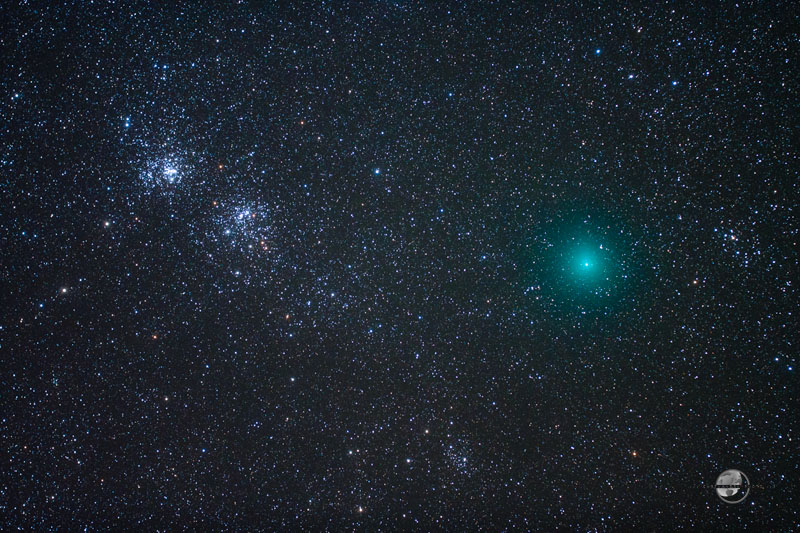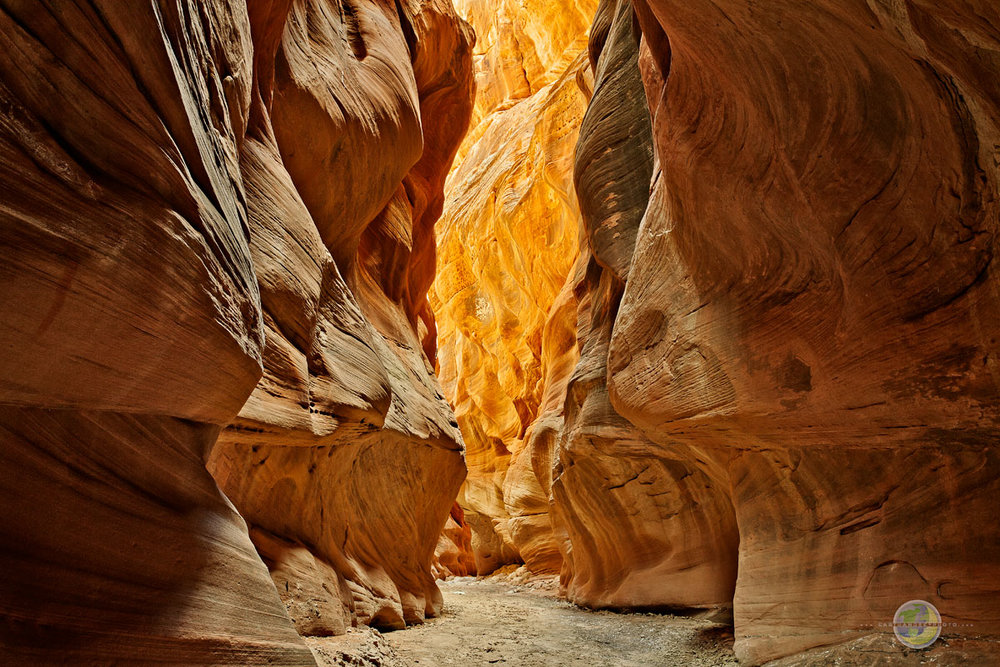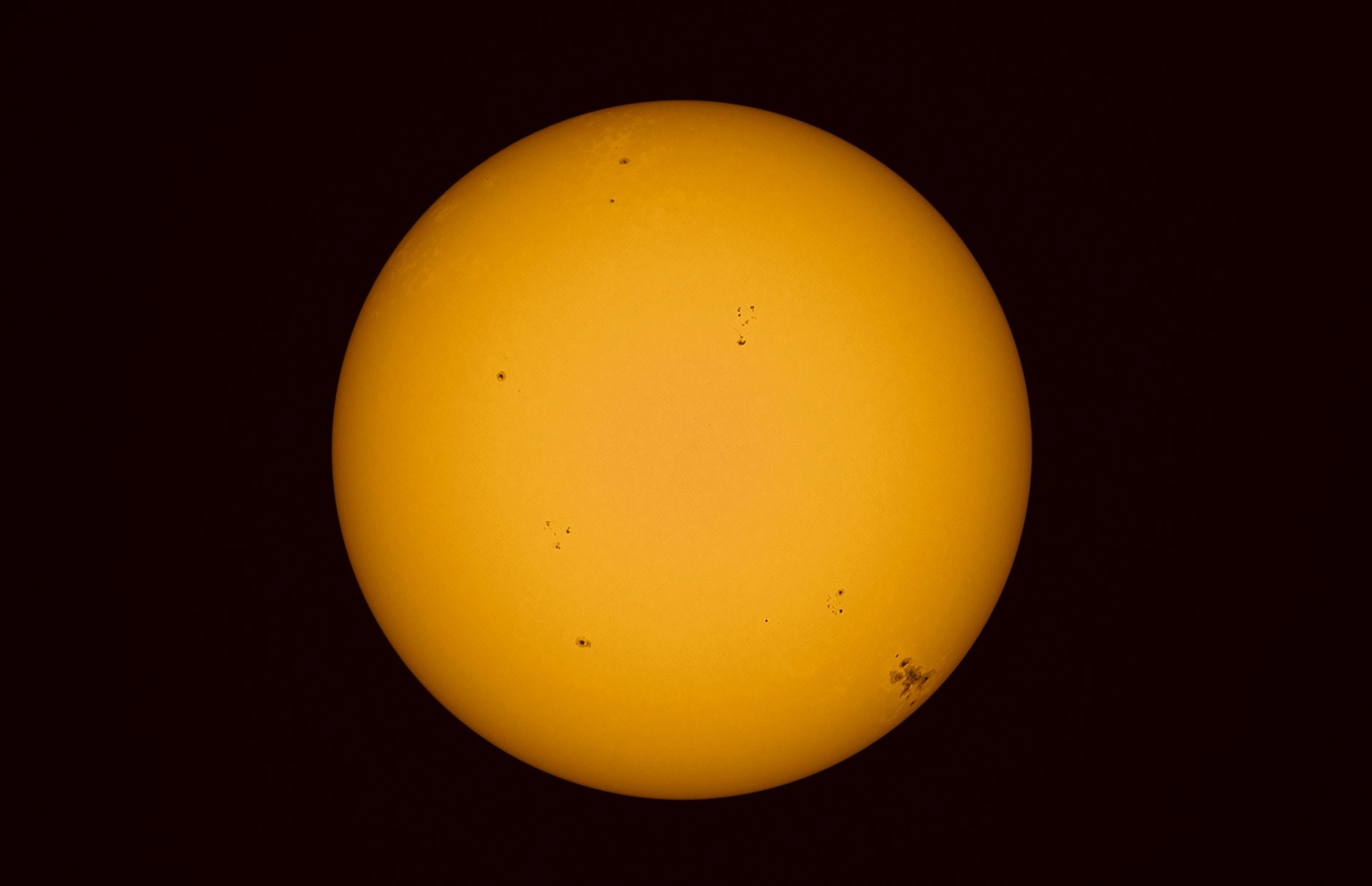Comet Hartley 2 visits our neighborhood
 Comet Hartley and the Double ClusterThis image was taken from Spruce Knob in the highlands of West Virginia on October 9 at 1:00 a.m. The image shows the green glow of Comet Hartley 2 as it graces our neighborhood of the solar system on its latest journey to the sun. Also in the picture is the deep sky object known as the Double Cluster. The cluster is made up of two distinct open clusters of stars and are also know as NGC 869 and 884. The comet was visited by the EPOXI Mission spacecraft on November 4 and the amazing images from that visit are featured on this APOD page. The comet's closest approach to Earth was 11 million miles on October 28 and will visit our neighborhood again in April 2017.
Comet Hartley and the Double ClusterThis image was taken from Spruce Knob in the highlands of West Virginia on October 9 at 1:00 a.m. The image shows the green glow of Comet Hartley 2 as it graces our neighborhood of the solar system on its latest journey to the sun. Also in the picture is the deep sky object known as the Double Cluster. The cluster is made up of two distinct open clusters of stars and are also know as NGC 869 and 884. The comet was visited by the EPOXI Mission spacecraft on November 4 and the amazing images from that visit are featured on this APOD page. The comet's closest approach to Earth was 11 million miles on October 28 and will visit our neighborhood again in April 2017.
November 2010 Print of the Month: Buckskin Gulch Glow
 Buckskin Gulch GlowThe November Print of the Month is "Buckskin Gulch Glow" from the most recent visit to the Colorado Plateau.
Buckskin Gulch GlowThe November Print of the Month is "Buckskin Gulch Glow" from the most recent visit to the Colorado Plateau.
Incredible fleeting glow in Buckskin Gulch in June 2010. Buckskin is a fabulous hike from the trailhead at The Wave in the Paria Wilderness area in Utah. On this day a brief moment of intense sunlight provided the incredible glow on the opposing wall of the gulch and created a most unique light in the cavernous system.
The print is luminescent on Canson Baryta Photographique paper and can be purchased at a 20% discount for the next 30 days.
Dead Horse Point Sunrise
 Dead Horse Point State Park, UTOne of the iconic overlooks in the western U.S. is Dead Horse Point just outside of Moab, UT. The overlook is breathtaking, especially as the morning light begins to cover the canyon. The rocky overlook is 2,000 feet above the Colorado River below. You may Google the state park for more information on how the name came to be. I hope you enjoy the image and may it "take you there." The print is made on Canson Baryta Photographique paper. For best presentation, please click on the image to go the the "Southwest" gallery and then click on the thumbnail for a black portfolio presentation. This image has been resized and is not at full optimization for viewing.
Dead Horse Point State Park, UTOne of the iconic overlooks in the western U.S. is Dead Horse Point just outside of Moab, UT. The overlook is breathtaking, especially as the morning light begins to cover the canyon. The rocky overlook is 2,000 feet above the Colorado River below. You may Google the state park for more information on how the name came to be. I hope you enjoy the image and may it "take you there." The print is made on Canson Baryta Photographique paper. For best presentation, please click on the image to go the the "Southwest" gallery and then click on the thumbnail for a black portfolio presentation. This image has been resized and is not at full optimization for viewing.
Cumulonimbus
 CumulonimbusA new image from the June visit to the Colorado Plateau presents the spectacular clouds that were building just outside of St. George, UT. The clouds were forming rapidly and the interplay of the clouds with the surrounding mountains was spectacular. Later that afternoon, Ken and I experienced a pretty intense hail storm while enjoying lunch. A few things that I wanted to represent in this image are the luminescence of the clouds as well as the slight red glow that lights the bottom of the cloud deck. The luminescence is most visible in the uprising cloud structure and looks as though the energy in the cloud is about to burst. The red glow on the bottom cloud deck is from the reflected light off of the desert.
CumulonimbusA new image from the June visit to the Colorado Plateau presents the spectacular clouds that were building just outside of St. George, UT. The clouds were forming rapidly and the interplay of the clouds with the surrounding mountains was spectacular. Later that afternoon, Ken and I experienced a pretty intense hail storm while enjoying lunch. A few things that I wanted to represent in this image are the luminescence of the clouds as well as the slight red glow that lights the bottom of the cloud deck. The luminescence is most visible in the uprising cloud structure and looks as though the energy in the cloud is about to burst. The red glow on the bottom cloud deck is from the reflected light off of the desert.
This print is made on Hahnemuhle Photo Rag paper.
Andromeda Galaxy 2010
 The Great Andromeda GalaxyIf you have followed previous blog posts you know that I have been working on this image for some time. I apologize that I did not provide more intermediate updates, but here is the final image as it will be printed on my Epson 7800. You may want to reference earlier posts about making a print of Andromeda beginning on September 15. You can see the initial RAW image at initial capture and compare to the finished image. As Ansel said, "you don't take a photograph, you MAKE a photograph."
The Great Andromeda GalaxyIf you have followed previous blog posts you know that I have been working on this image for some time. I apologize that I did not provide more intermediate updates, but here is the final image as it will be printed on my Epson 7800. You may want to reference earlier posts about making a print of Andromeda beginning on September 15. You can see the initial RAW image at initial capture and compare to the finished image. As Ansel said, "you don't take a photograph, you MAKE a photograph."
It is always a pleasure to revisit familiar astronomical objects and the Great Andromeda Galaxy is certainly one of the finest. This past August we had the opportunity to capture the galaxy from the fabulous dark skies of The Mountain Institute on Spruce Knob in West Virginia during the Almost Heaven Star Party. The galaxy is a marvel to behold as one of our local neighborhood galaxies that stretches over 220,000 light years across. It is the farthest deep sky object that can be seen with the unaided eye and is located at a distance of over 2,000,000 light years away. The galaxy is easily seen from the dark skies of Spruce Knob with the unaided eye. The diffuse glow of the galaxy is caused by billions of stars shining throughout the galaxy's disk. Andromeda is classified as a spiral type of galaxy. For more information and to view the image in the black portfolio screen (the best view) please click here.
Jeff's Blog
Join me on photography journeys from desert landscapes to deep sky wonders.




















